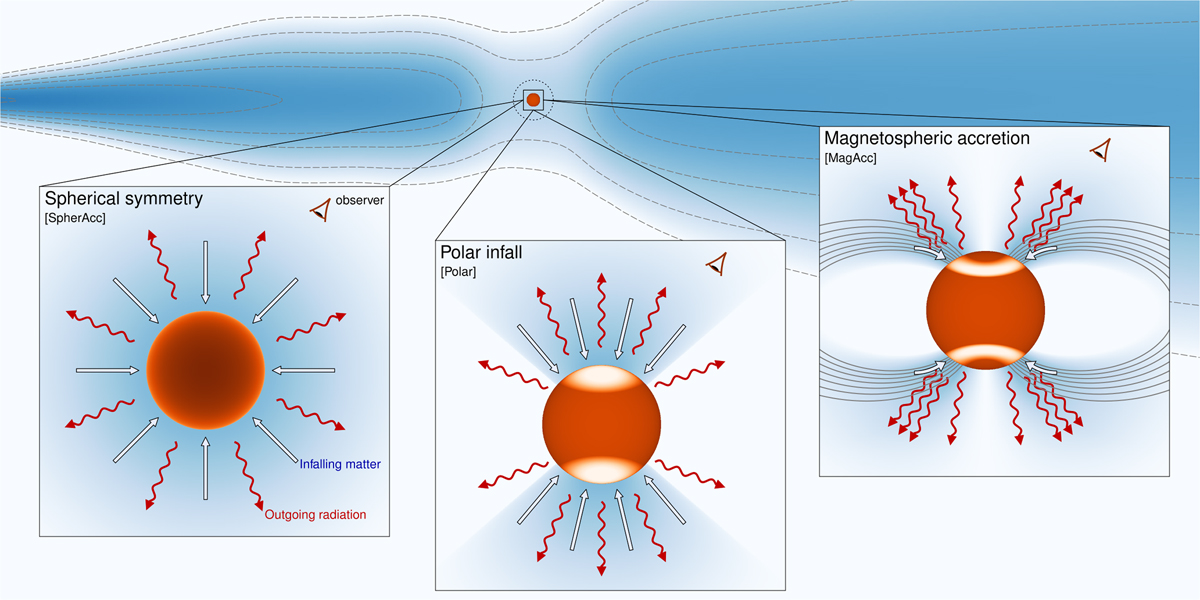Fig. 1

Download original image
Schematic view of the accretion scenarios considered in this work. In spherical symmetry (SpherAcc), the gas (straight thick lines) is assumed to be distributed uniformly on the surface of the planet (ffill = 100%), whereas in the case of polar infall (Polar) the accreting gas is concentrated near the pole regions (assumed to be uniform within ffill ≈ 30%, and zero outside of this). In the magnetospheric accretion case (MagAcc), the magnetic field of the protoplanet leads the gas onto a small fraction of the surface (here shown as polar-ring hot spots; ffill ~ 10%). See Table 1. At slightly larger scales (the insets show out to Racc) the gas could be coming from above, falling onto the apex of the magnetic field lines (Batygin 2018), or from a circumplanetary disc (purposefully not shown). In all cases, the radiation (H α -coloured squiggly lines) reaching the observer passes through the matter (gas and dust) accreting onto the planet and bears the spectralimprint of this material, which is the subject of this paper. Illustration by Th. Müller (MPIA/Haus der Astronomie).
Current usage metrics show cumulative count of Article Views (full-text article views including HTML views, PDF and ePub downloads, according to the available data) and Abstracts Views on Vision4Press platform.
Data correspond to usage on the plateform after 2015. The current usage metrics is available 48-96 hours after online publication and is updated daily on week days.
Initial download of the metrics may take a while.


